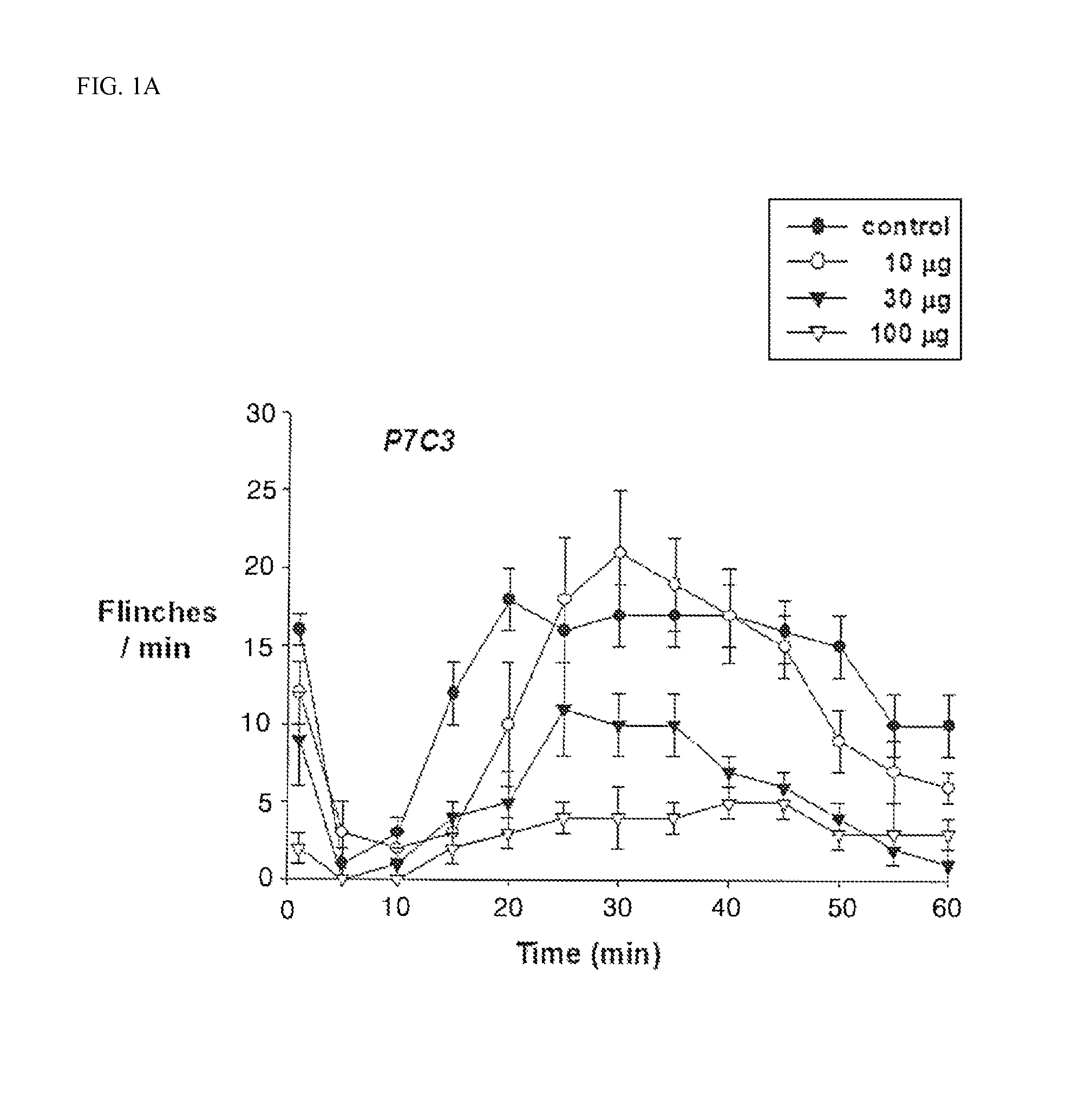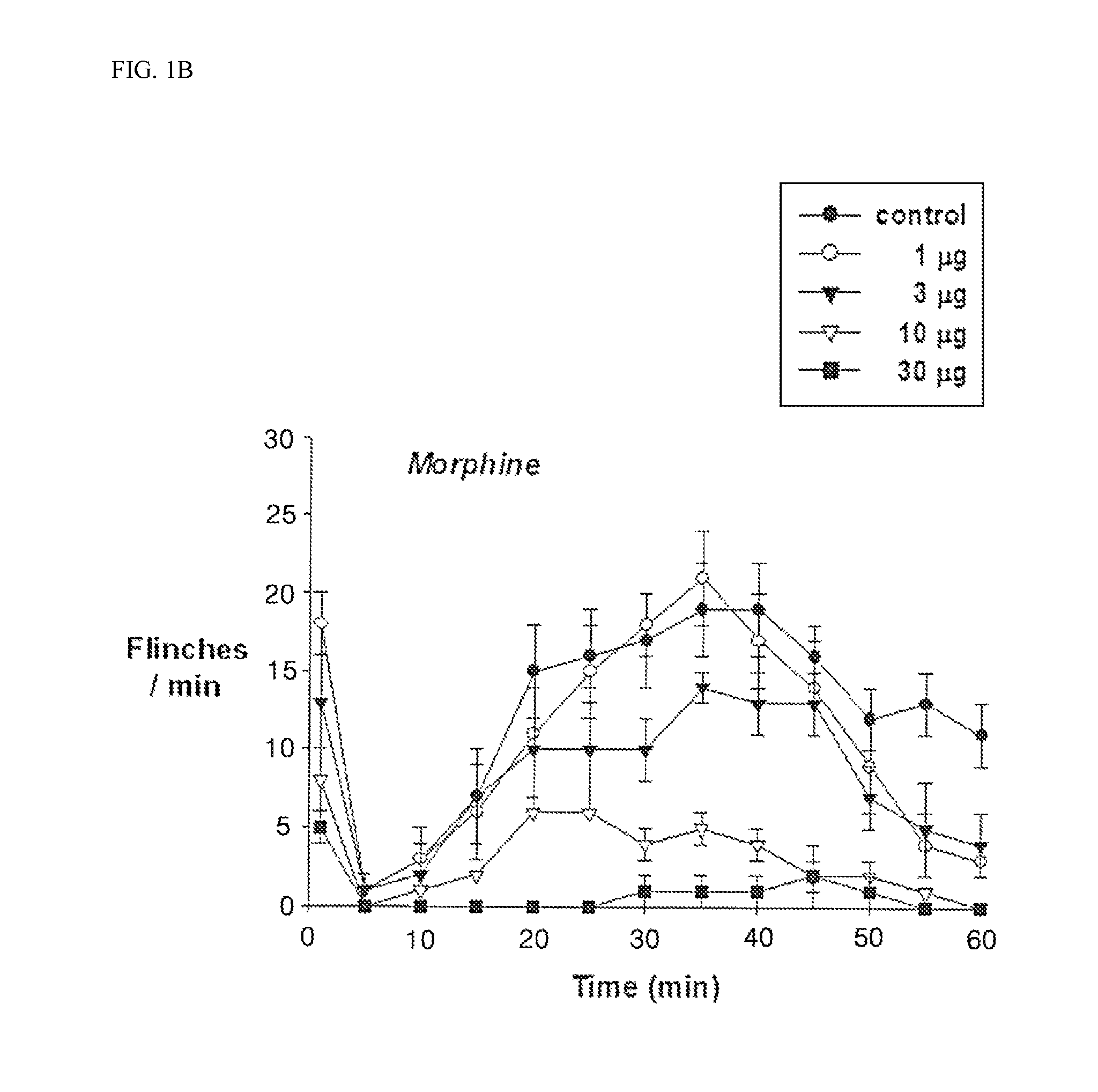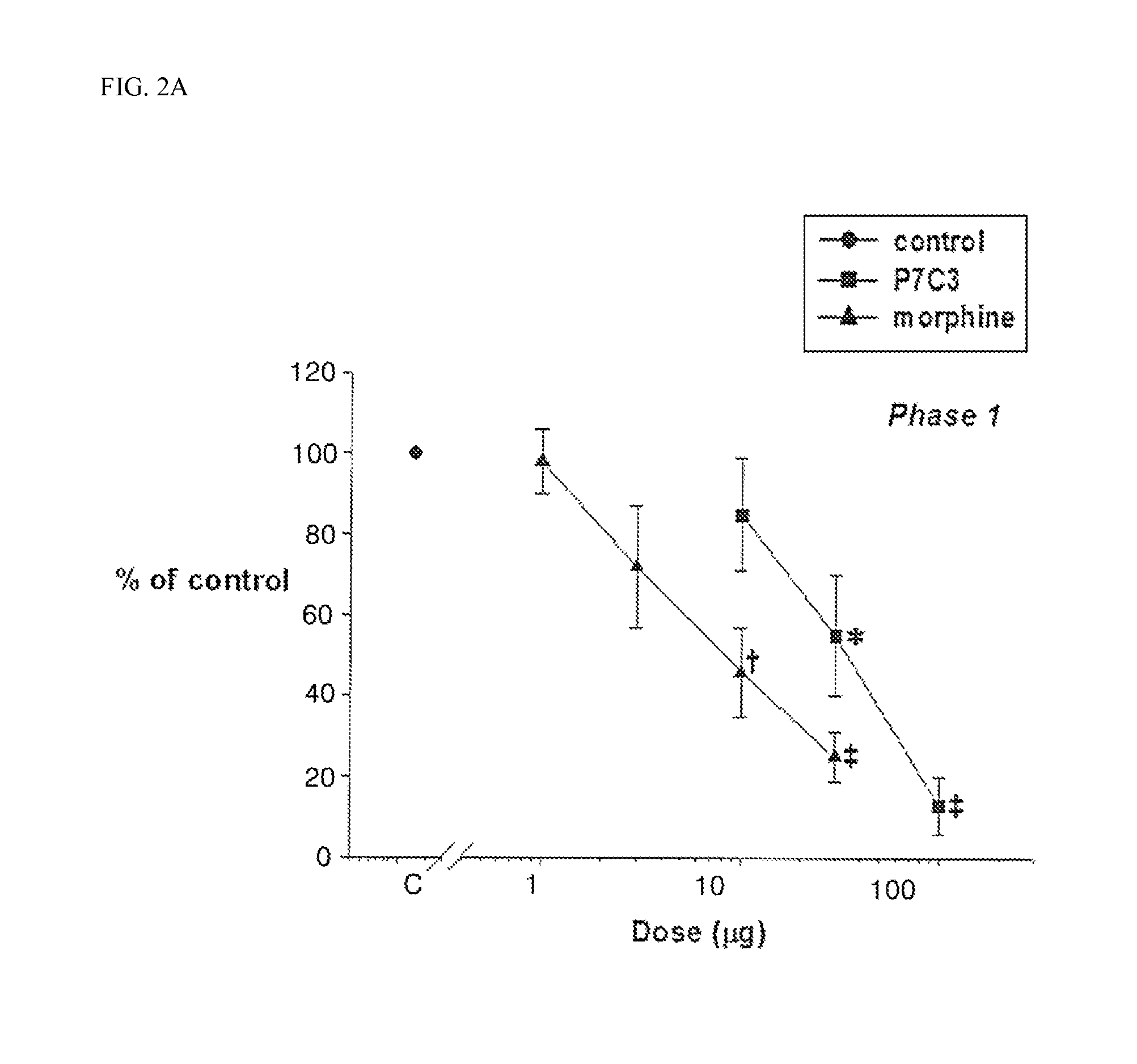Analgesic composition including opioid analgesic and P7C3
an analgesic and composition technology, applied in the field of analgesic composition including an opioid analgesic and p7c3, can solve the problems of evoke pain, unsatisfactory medicinal treatment effects, and no magic bullets have been established, and achieve the effect of reducing the formalin response of the control
- Summary
- Abstract
- Description
- Claims
- Application Information
AI Technical Summary
Benefits of technology
Problems solved by technology
Method used
Image
Examples
example
Experimental Subject
[0037]After permission for all the procedures in the experimental protocol was obtained by The Institutional Animal Care and Use Committee of Chonnam National University, experiments were performed. Adult male Sprague-Dawley rats (250 to 300 g) were used as the experimental subject, four rats per group were housed and kept in a well-controlled vivarium, maintained at 22° C. for 12 hours, with an alternating light / dark cycle and were given food and water ad libitum. Rats were under sevoflurance anesthesia in order to be implanted with an intrathecal catheter, and placed in a stereotaxic apparatus A polyethylene catheter lower end portion was intrathecally inserted so as to be positioned within the lumbar extension portion through an incision in the cisternal membrane. Then, the catheter upper end portion was secured at the skull. After the catheter implantation, rats were again housed in individual cages. After the intrathecal catheter implantation, rats showing m...
experimental example
Evaluation of Response of Intrathecal Administration of P7C3
[0040]In order to detect undesirable behaviors induced by P7C3, the highest dose (100 μg) was intrathecally administered to 5 rats of each individual group. Motor function was assessed by the placing-stepping reflex and the righting reflex. The former was evoked by drawing the dorsum of each hind paw across the edge of the table; healthy rats generally try to put the paw ahead into a position for walking. The latter was evaluated by placing the rat horizontally with the rat's back on the table. The healthy rats automatically rise by immediately twisting the body into an upright position. The central nervous system was evaluated through pinna and corneal reflexes. Stimulation was given by using the catheter to touch the ear canal or the cornea. After the stimulation, the healthy rats shake their heads or blink, respectively.
[0041]Normality of behavior was judged as present or absent, and each reflex after the intrathecal adm...
example 1
Effect Experiment of P7C3 and Morphine
[0042]Saline, 10, 30, and 100 μg of P7C3 (Tocris Cookson Ltd., Bristol, UK), and 1, 3, 10, and 30 μg of morphine sulfate (Sigma-Aldrich, St. Louis, Mo., USA) were intrathecally administered 10 minutes before formalin injection, and analgesic effects (flinching number analysis) were investigated according to the aforementioned pain experiment. The drug was intrathecally administered by using a manually gear operated syringe pump. All the drugs were administered in an amount of 10 μl, and an additional 10 μl of standard saline was administered in order to wash out the catheter.
[0043]The dose (ED50), which decreases the formalin response of the control for P7C3 and morphine by 50%, was determined at Phase 1 and the Phase 2, respectively. The ED50 of P7C3 and morphine in Phase 1 was 31.8 μg and 8.8 μg, respectively, and the ED50 of P7C3 and morphine in Phase 2 was 31 μg and 3.9 μg, respectively.
PUM
| Property | Measurement | Unit |
|---|---|---|
| recovery time | aaaaa | aaaaa |
| affinity | aaaaa | aaaaa |
| pressure | aaaaa | aaaaa |
Abstract
Description
Claims
Application Information
 Login to View More
Login to View More - R&D
- Intellectual Property
- Life Sciences
- Materials
- Tech Scout
- Unparalleled Data Quality
- Higher Quality Content
- 60% Fewer Hallucinations
Browse by: Latest US Patents, China's latest patents, Technical Efficacy Thesaurus, Application Domain, Technology Topic, Popular Technical Reports.
© 2025 PatSnap. All rights reserved.Legal|Privacy policy|Modern Slavery Act Transparency Statement|Sitemap|About US| Contact US: help@patsnap.com



